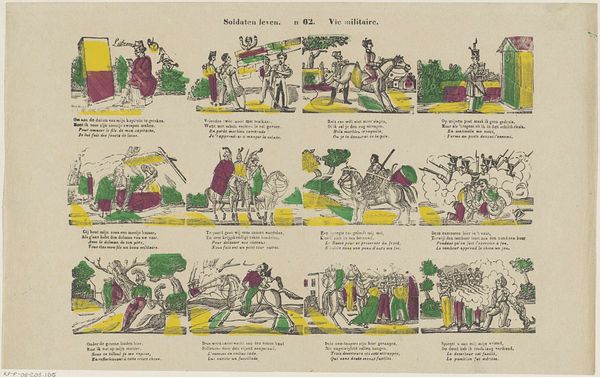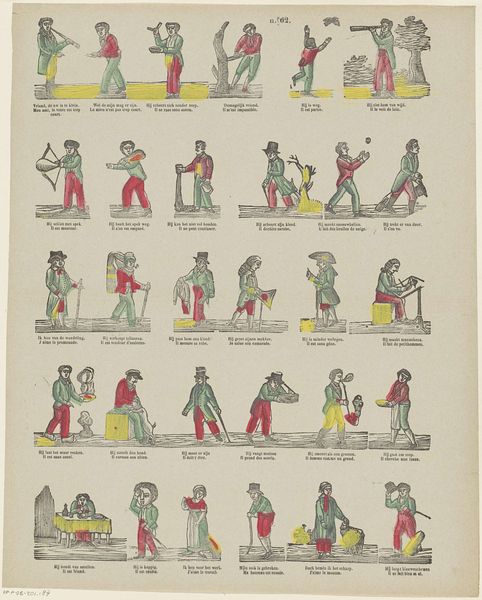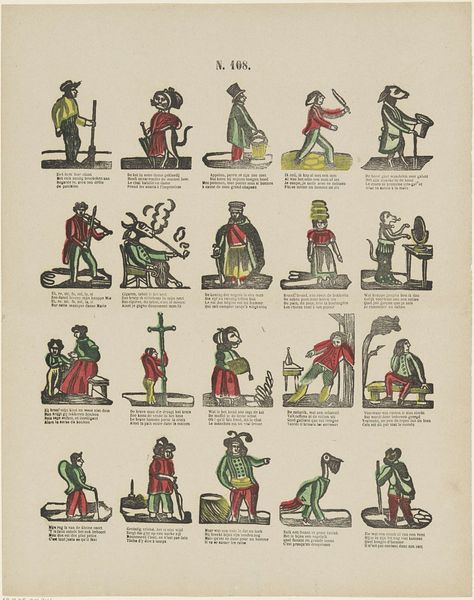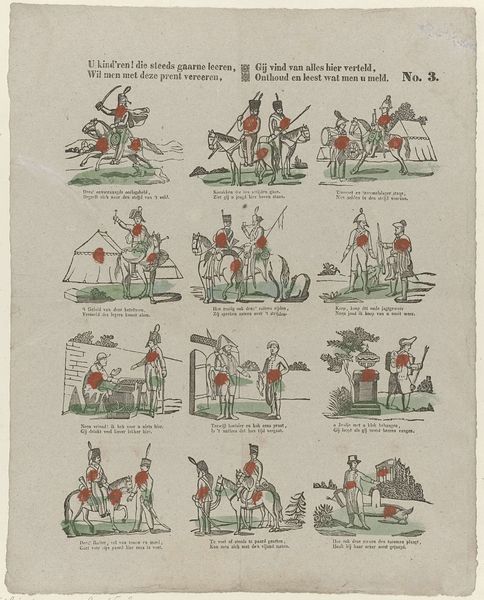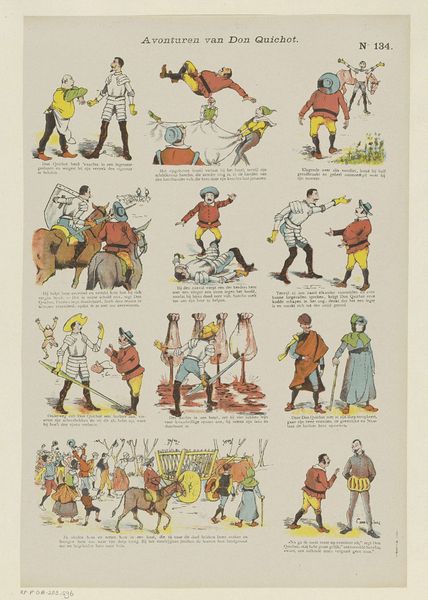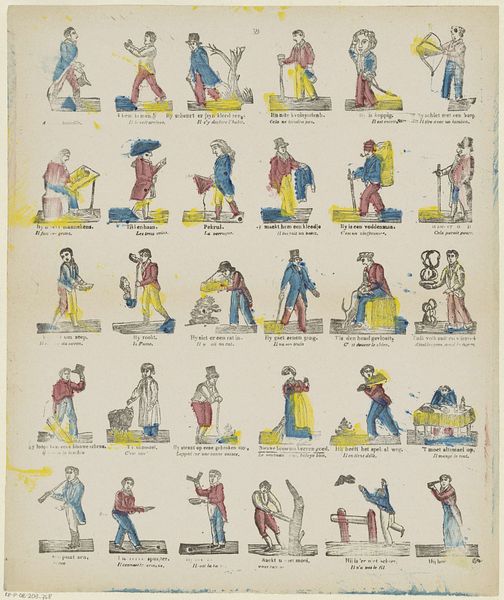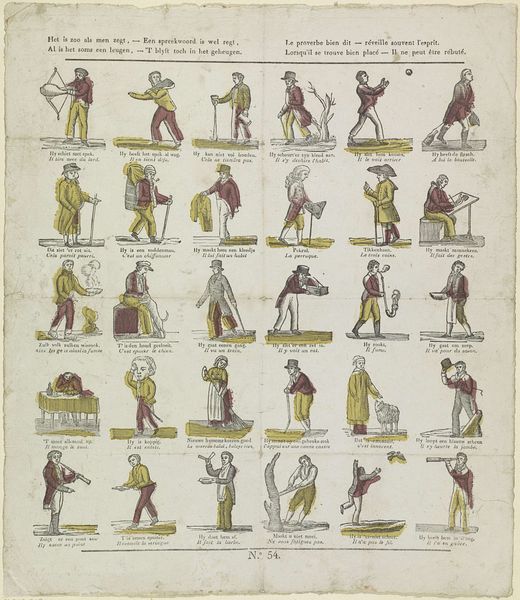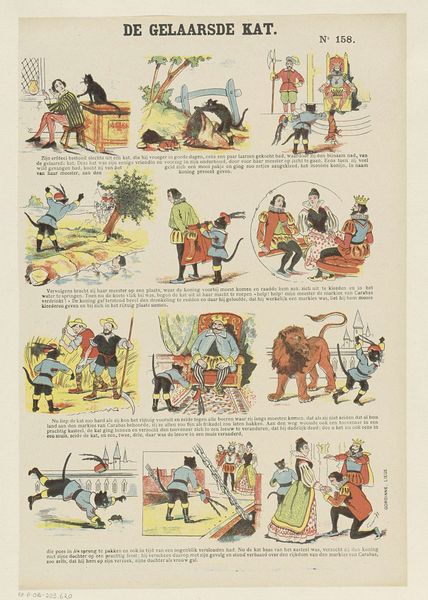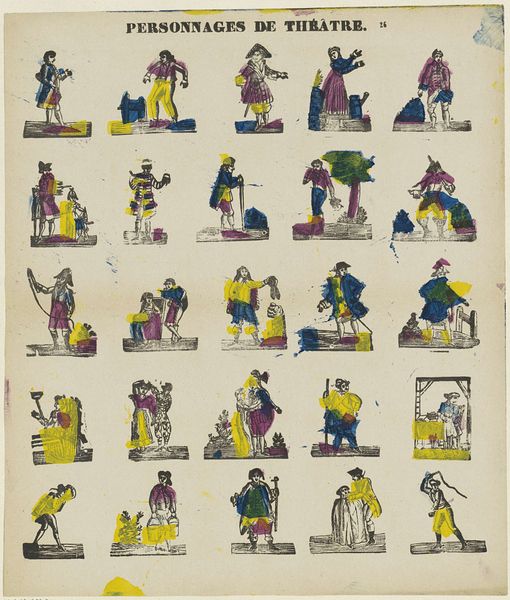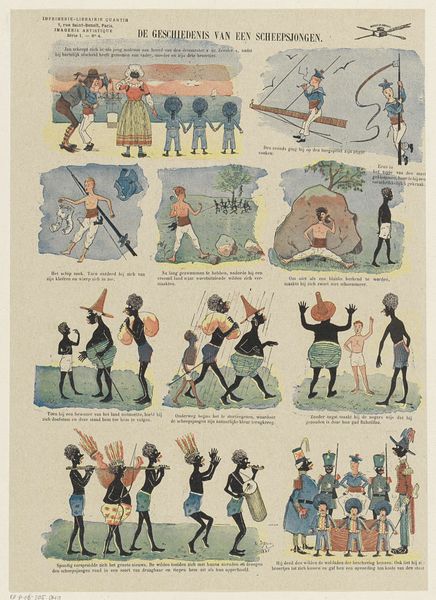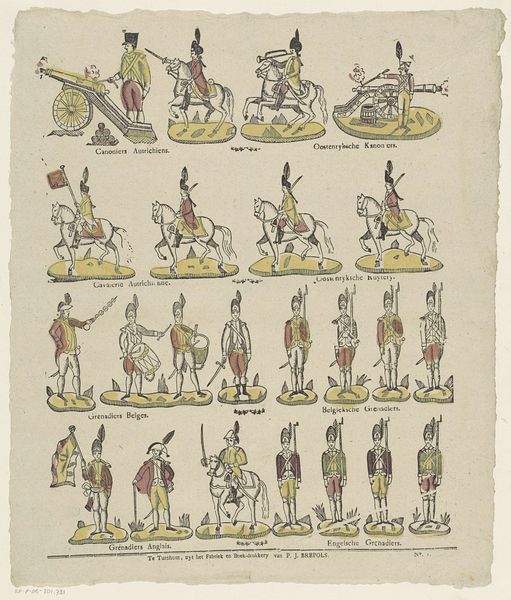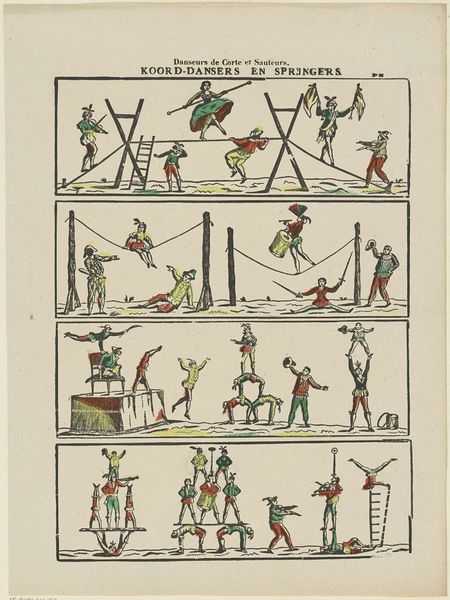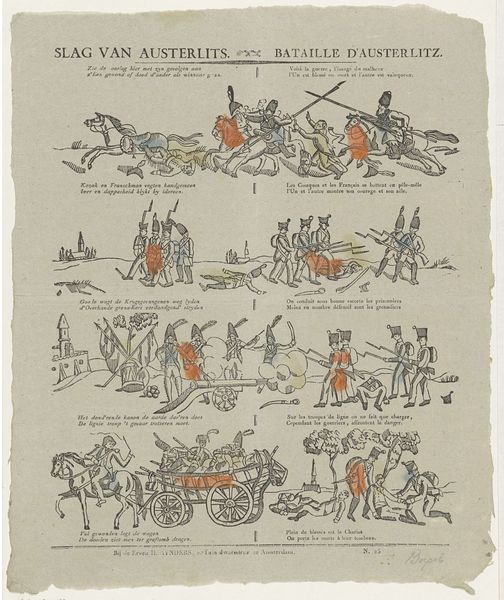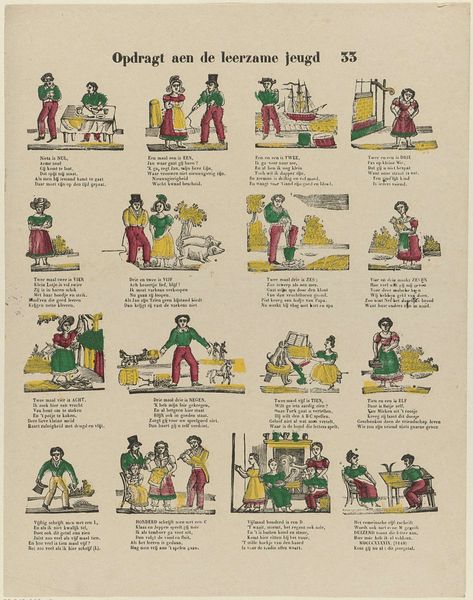
Myn knaepjes! deze prent verbeeldt den krijgeren stand, / En toont, 't beleid en moed der dappere soldaten. / Groeit ook zoo walig op voor vorst en vaderland, / Dan zal uw mannen hart geen spoor van lafheid laten 1833 - 1900
0:00
0:00
graphic-art, print
#
graphic-art
#
comic strip sketch
#
narrative-art
# print
#
pen sketch
#
figuration
#
personal sketchbook
#
sketchwork
#
ink drawing experimentation
#
pen-ink sketch
#
line
#
pen work
#
sketchbook drawing
#
history-painting
#
storyboard and sketchbook work
#
sketchbook art
Dimensions: height 399 mm, width 327 mm
Copyright: Rijks Museum: Open Domain
Curator: Let's take a look at this printed work by Glenisson & Van Genechten, titled "Myn knaepjes! deze prent verbeeldt den krijgeren stand, / En toont, 't beleid en moed der dappere soldaten. / Groeit ook zoo walig op voor vorst en vaderland, / Dan zal uw mannen hart geen spoor van lafheid laten." Created sometime between 1833 and 1900, it’s a really interesting example of early narrative art in print. Editor: Whoa. Okay, so first impression: It looks like a slightly chaotic flipbook frame, maybe? All these little soldiers, lines of them… Sort of charmingly militaristic? Like a toy soldier convention gone sideways. Curator: I think "charming" is a great way to put it. Prints like these, circulating in the 19th century, often served to instill patriotic values and offer accessible depictions of military life. Notice the repetition, how the soldiers in formation mirror earlier depictions of officers on horseback. It creates a sense of organized power but within a simple, digestible format. Editor: Definitely see the patriotism baked in – a little heavy-handed for my taste, I confess. All those rows of identical guys with rifles...it's more about uniformity than individuality, right? What strikes me is how they try to suggest motion by repeating nearly identical figures. A stagecoach morphing along with tiny little explosions of landscape behind them! It makes me grin, though. It’s utterly earnest. Curator: And, of course, the text underscores that very intent. It is very direct about encouraging young men to be brave for their country, playing directly into contemporary notions of civic duty and masculinity. These images really helped shape how ordinary people perceived their nation and their place within it. Editor: True, there’s context. But when I really zone in, I just see an artist meticulously scratching out a vision – maybe even someone feeling a touch rebellious doing it? It has that sketchbook quality – a little irreverent against something so stiffly political! What do you suppose the folks who first saw this really made of it, beyond all the State intention, of course? Curator: A complex question, because their understanding would have been filtered through different social norms and patriotic sentiments. But seeing art as a social tool like this opens up a wider discussion about how nations cultivate allegiance and image, from the ground up. Editor: Hmm…Food for thought indeed. Gives a whole new level of “depth” to kids playing with army men…Makes me rethink all kinds of things, not just the visual layers…
Comments
No comments
Be the first to comment and join the conversation on the ultimate creative platform.
